JF Ptak Science Books Quick Post
These two papers by Fritz Zwicky constitute among the earliest announcements on the use of gravitational lensing, and the first mention of the possibility of using galaxies as gravitational lenses. The two letters to the editor followed the very brief notice that Einstein sent to Science magazine in 1936 (and which was a follow-up on some earlier thinking (24 years
earlier) he had done on the gravitational lens, this publishing as a result of "insistent prodding"1 by Rudi Mandl, a Czech engineer. Einstein all but disowned the idea, noting "of course, there is not much hope of observing this phenomenon directly"2 The papers also follow a popular mention of the idea by Henry Norris Russell in Scientific American in 1936. Aside from the appearance of the idea in Zwicky's 1957 Morpholigical Astronomy, it is noted in Singularity Theory and Gravitational Lensing (see footnotes below) that there is a period of virtual silence on the subject for the next 25 years, and that from 1960 to 1980 there seem to have been fewer than two dozen additional papers. [ZWICKY, Fritz. "Nebulae as Gravitational Lenses", 1937, in the Physical Review, 51(4), a one-page letter to the editor on page 290, and ZWICKY, Fritz. "On the Probability of Detecting Nebulae Which Act as Gravitational Lenses." American Physical Society, 1937, in The Physical Review, 51 (8), April 15, 1937.]
Footnote 3, --Long quote from Gravitational Lenses, by P. Schneider, J. Ehlers, E.E. Falco
"In 1937 Zwicky thought of another way to investigate dark matter. If by chance a massive galaxy lies along our line of sight to a more distant galaxy, it could act as a “gravitational lens,” warping the surrounding space to magnify, distort, and even multiply the image of the background galaxy. This was a direct application of Einstein’s Theory of General Relativity. The bending of starlight by the gravity of the Sun had already been demonstrated in 1919. Zwicky predicted that massive galaxies would similarly distort the light rays from background objects and that the distortion could be used to “weigh” the lensing galaxies. Most astronomers did not take this idea seriously. But in 1979, five years after Zwicky died, the first of many gravitational lenses was discovered, and a cottage industry has since emerged to find and study them. The lensing effect is now used to measure the cosmological parameters of the universe, and to reveal distant objects otherwise too faint to see."4
"Fritz Zwicky (1898-1974), an astronomer at the California Institute of Technology, discussed the possibility of observing the lensing effect in the case of the recently discovered extragalactic nebula, in other words: other galaxies. The typical masses, sizes and mutual distances of galaxies are such that double images of a distant galaxy should be significantly more frequent than double images of stars: The necessary near-alignment of a closer object, a more distant object and an observer here on Earth is much more probable for galaxies than for stars."5
And also: "If ever a competition were held for the most unrecognized genius of twentieth century astronomy, the winner surely would be Fritz Zwicky (1898–1974). A bold and visionary scientist, Zwicky was far ahead of his time in conceiving of supernovas, neutron stars, dark matter, and gravitational lenses. His innovative work in any one of these areas would have brought fame and honors to a scientist with a more conventional personality. But Zwicky was anything but conventional. In addition to his brilliant insights that turned out to be right, he also entertained notions that were merely eccentric. To his senior colleagues he could be arrogant and abrasive. He referred contemptuously to “the useless trash in the bulging astronomical journals.” He once said, “Astronomers are spherical bastards. No matter how you look at them they are just bastards.” His colleagues did not appreciate this aggressive attitude and, mainly for that reason, despite Zwicky’s major contributions to astronomy, he remains virtually unknown to the public."6
NOTES
1. "Einstein's paper on gravitational lensing from 1936 was published only as a result of insistent prodding by the Czech amateur scientist Rudi Mandl..." Jurgen Renn, Tilman Sauer, "In the limelight of stars. Einstein, Mandl, and the origins of gravitational lens research", Analytical chimica acta, January 2005, 27, 210-239, this quote from the abstract.
2. Arlie O. Petters, Harold Levine, Joachim Wambsganss,Singularity Theory and Gravitational Lensing, pg 7.
3. P. Schneider, J. Ehlers, E.E. Falco Gravitational Lenses.
4. Steven Soter and Neil deGrasse Tyson, eds. Cosmic Horizons: astronomy at the Cutting Edge. New Press, American Museum of Natural History, 2000. Source


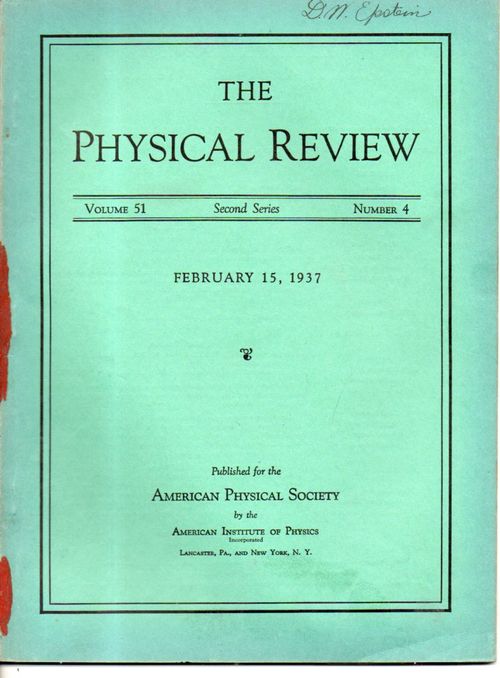
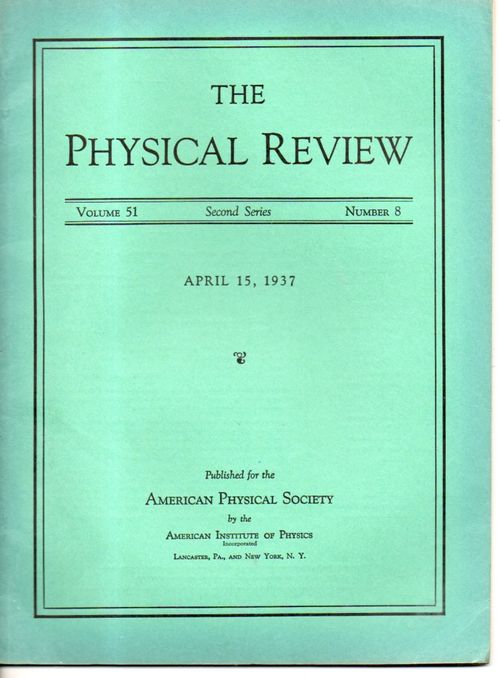
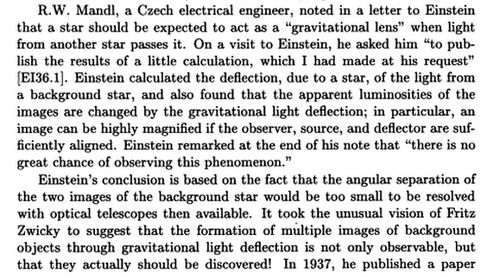
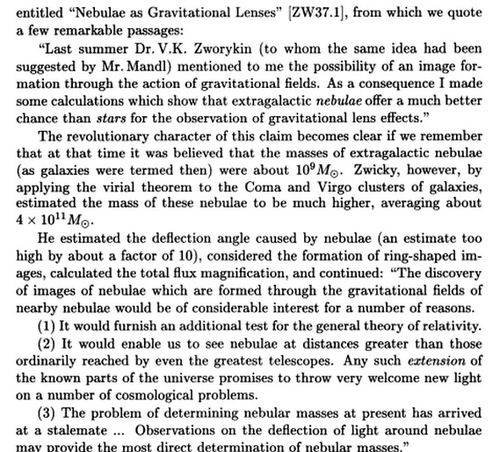
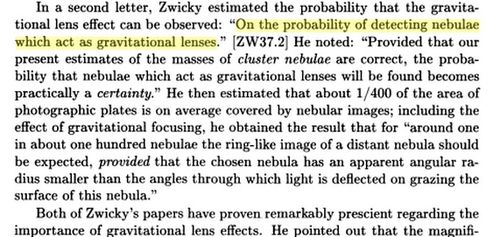

Comments